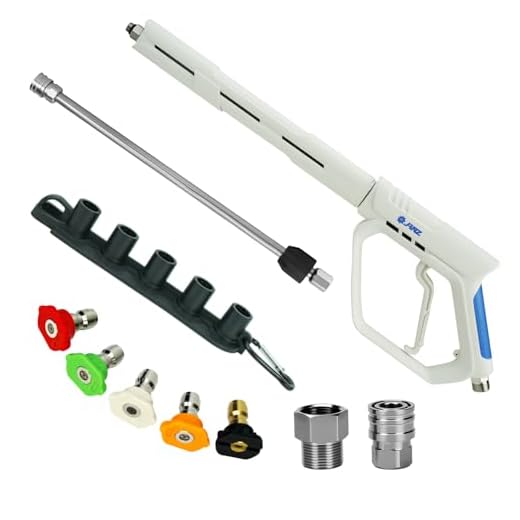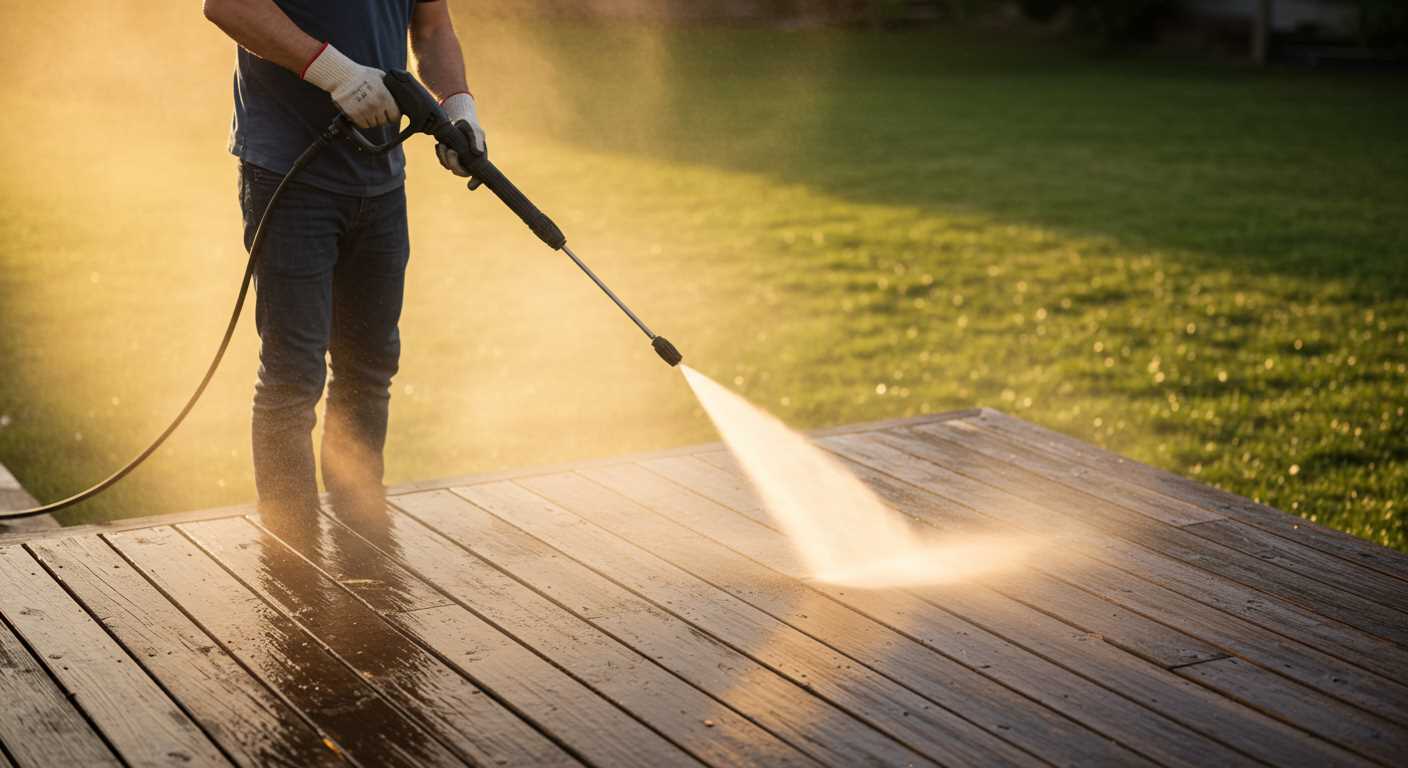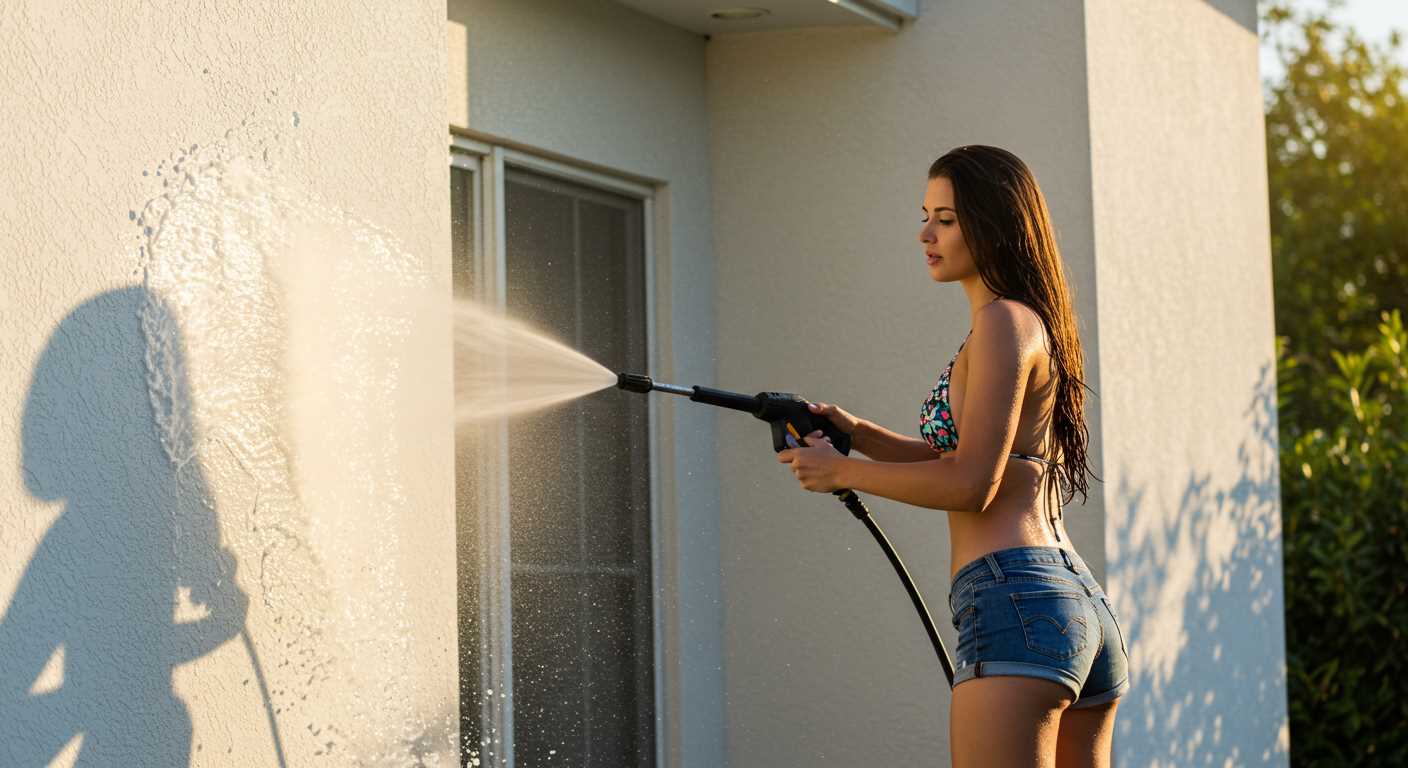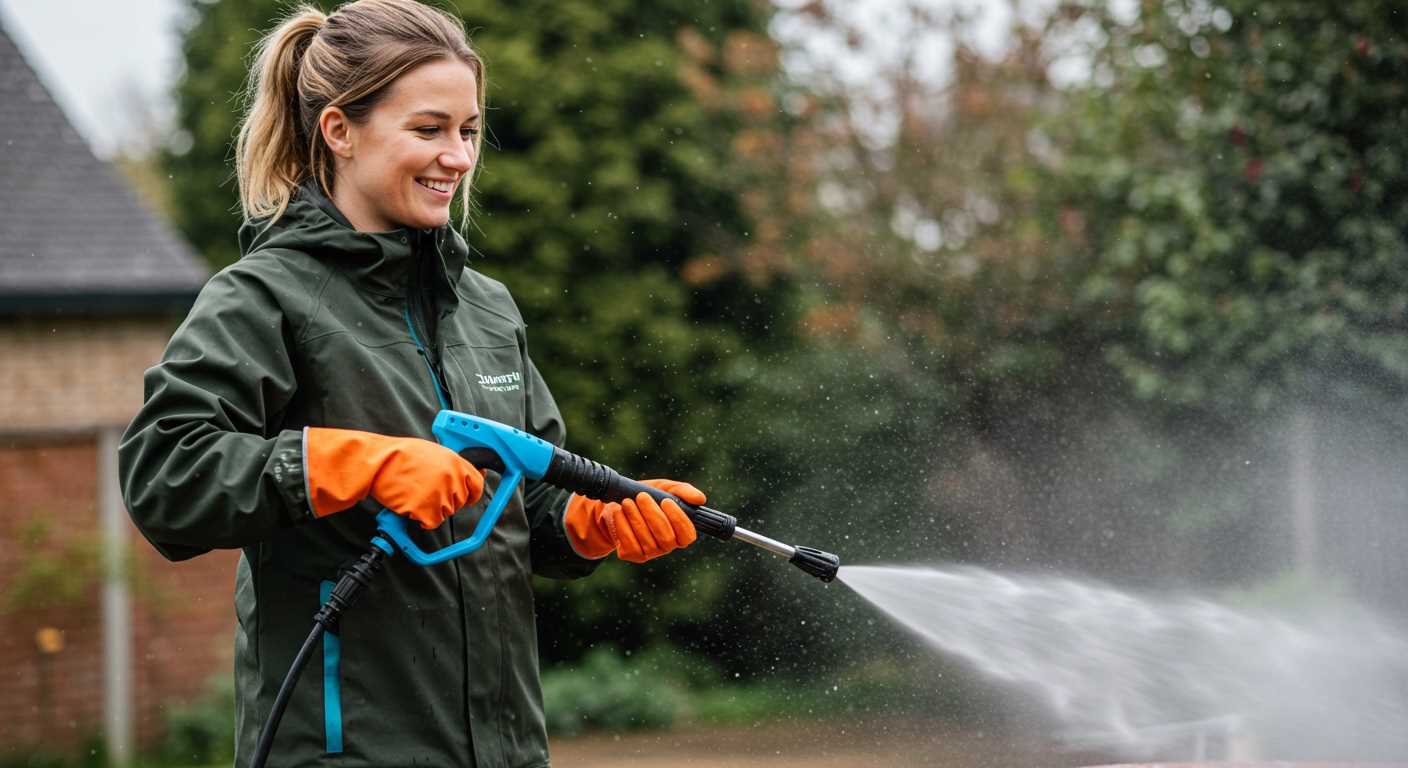



To address issues with your cleaning device exhibiting erratic water flow, first check for any clogs in the nozzle or hose. Blockages can significantly hinder performance, leading to fluctuations in water output. Ensure that all connections are tight and free of debris, which can create pressure imbalances.
Next, inspect the pump for any signs of wear or damage. A malfunctioning pump is often a primary source of erratic pressure, as it struggles to maintain a steady flow. If you hear unusual noises or notice leaks, it may be time to repair or replace the pump. Regular maintenance, including lubricating moving parts, can help prevent such issues.
Examine the water supply source. Insufficient water supply or varying quality can contribute to inconsistent performance. Make sure the inlet filter is clean and the water source is providing an adequate flow rate. If using a hose, consider its diameter and length, as these can also impact pressure stability.
Lastly, evaluate the settings and specifications of your device. Operating outside the recommended parameters, such as excessive pressure or incorrect nozzle size, can lead to unsatisfactory performance. Adhering to the manufacturer’s guidelines will ensure optimal function and longevity of your cleaning equipment.
Factors Behind Irregular Water Flow in Cleaning Equipment
To address inconsistent water output in cleaning machines, the following aspects merit immediate attention:
- Blocked Filter: Regularly inspect and clean the inlet filter to ensure unobstructed water flow.
- Air in the System: Bleed the machine as trapped air can disrupt water pressure. Following the manufacturer’s guidelines is vital for this process.
- Inconsistent Power Supply: Verify that the electricity source provides a steady voltage. Fluctuations can impair performance.
- Worn or Damaged Components: Examine seals, O-rings, and hoses for wear. Damages can lead to leaks, affecting the performance of the unit.
- Pump Malfunction: Listen for abnormal sounds when operating. Strange noises might indicate pump issues which require professional assessment.
- Wrong Nozzle Choice: Selecting an incorrect nozzle can adversely affect water flow. Always use the nozzle recommended for your specific tasks.
- Improper Maintenance: Adhere to a detailed maintenance schedule, including regular checks and fluids replacement, to sustain optimal operation.
Identify factors contributing to flow irregularities promptly to maintain the functionality of your equipment. An organised approach can prevent further complications and prolong the lifespan of your cleaning unit.
Understanding Water Flow Issues in High-Pressure Cleaners

Check for proper water supply before troubleshooting an inconsistent spray. Insufficient flow directly impacts performance. Ensure the hose is fully opened and free of kinks, bends, or blockages.
Filters and Screen Maintenance
Regularly inspect and clean the inlet filter and any screens. Debris accumulation restricts water flow and can lead to an unsteady output. A clogged filter not only affects performance but may also damage internal components over time.
Hose and Connection Integrity
Examine all hoses and connections for leaks or wear. A compromised hose can reduce pressure and disrupt fluid movement. Additionally, ensure all fittings are tight and secured to prevent air from entering the system, which could result in a fluctuating experience during use.
The Role of the Pressure Washer Pump in Surging

The pump’s design and functionality play a significant role in creating irregular performance in these machines. A common issue I encountered is associated with the plunger or piston within the pump, which can lead to fluctuating output.
Typically, when the pump components wear down or become misaligned, they hinder consistent water output, generating pulsation in the flow. Regular maintenance and checks can prevent this by ensuring that all internal mechanisms function smoothly.
Here are key factors to consider regarding the pump’s performance:
- Wear and Tear: Over time, the seals and pistons can degrade, resulting in poor pressure consistency.
- Misalignment: If components are not correctly aligned during assembly or maintenance, it can cause irregular flow.
- Blockages: Any obstruction in the inlet or the pump itself impacts water flow, leading to irregular pressure delivery.
Inspecting these elements regularly can ensure the pump operates smoothly, reducing the risk of fluctuating pressure. I recommend cleaning filters and checking seals routinely.
Additionally, the water supply’s quality might influence pump performance. Debris or contaminants can enter the system, affecting the overall functionality. Always use clean, filtered water to maintain optimum performance.
In my experience, understanding the nuances of the pump significantly reduces the likelihood of performance issues. Investing time into its upkeep results in a more reliable and consistent operation.
Identifying Problems with the Nozzle or Spray Wand
First, check for blockages in the nozzle or wand. Debris, dirt, or mineral buildup can hinder water flow, leading to irregular performance. Remove the nozzle and inspect it, cleaning with a nozzle cleaning tool or a wire if necessary.
Next, take a look at the spray pattern. If the stream is uneven or disperses erratically, the nozzle might be damaged or worn out. Replacing a faulty nozzle can significantly enhance operation quality. Look for cracks or signs of wear on the nozzle head.
Adjusting Pressure Settings
If the nozzle has adjustable settings, ensure they are correctly set for the task at hand. Incorrect adjustment can lead to undesirable results, including inconsistent output. Familiarise yourself with recommended settings for different surfaces and cleaning requirements.
Inspecting Hose Connections
Evaluate the connections between the wand and the nozzle. Loose fittings can cause leaks, which affect overall performance. Tighten any loose connections to ensure a proper seal, preventing loss of water pressure. Additionally, inspect the hose for any kinks or damage that might restrict flow.
How Clogged Filters Contribute to Pressure Fluctuations
Regular maintenance of filters is critical to ensuring steady fluid flow. A blocked filter restricts water intake, leading to interruptions in output strength. These variations are often mistaken for mechanical issues but frequently arise from neglected filters.
After countless tests on various cleaning units, I found that even minor debris accumulation can significantly impact performance. This blockage creates pressure discrepancies, as the pump struggles to draw adequate water. Users should inspect and clean filters frequently, ideally before each use, to maintain consistent flow.
In addition to ensuring filters are clear, utilising high-quality water supply is vital. Sediments in water can exacerbate clogging, making routine filter replacements an advisable practice. By prioritising this aspect, one can extend the overall longevity of the equipment and avoid inconvenient operational disruptions.
If you notice fluctuations during usage, inspect the filter immediately. Addressing this component promptly often resolves issues without further intervention. Keeping filters clean is one of the simplest yet most effective maintenance steps one can take to ensure optimal machine performance.
Maintaining Proper Hose Connections to Prevent Surging
Ensure all connections are tight and secure before starting any cleaning task. Loose or worn-out hose fittings can disrupt the water flow, leading to inconsistent performance. Inspect hoses frequently for any signs of wear or damage, such as cracks or kinks, which can cause pressure drops or fluctuations.
Use Quality Hoses and Couplings

Selecting high-quality hoses and fittings is key. Opt for hoses specifically rated for high-pressure applications. Avoid adapters and connectors that don’t match your equipment specifications, as incompatible fittings can contribute to airflow issues, further impacting the unit’s operation.
Regularly Check for Obstructions
Periodically examine all connections for any debris or obstructions that may hinder water flow. Clear any blockages promptly to maintain a consistent flow rate. Also, ensure the inlet filter is clean, as buildup can restrict water input, leading to inadequate supply to the pump.
The Impact of Air Leaks on Pressure Stability
To ensure optimal operation, it’s critical to promptly address any air leaks in the system. These leaks can significantly disrupt the consistent flow of liquid, causing fluctuations that hinder performance. Regularly inspect all components for signs of wear or damage where air might infiltrate.
One common area where air leaks occur is at the connections between hoses and fittings. If you notice any cracks or loose connections, they must be tightened or replaced immediately. A slight imperfection can lead to air entering the system, causing an uneven distribution of water pressure.
Another frequent source of leaks is the pump casing. Over time, seals can degrade due to exposure to various elements. Monitoring the integrity of seals and replacing them when necessary ensures that air does not compromise the water flow.
Below is a summary table of key areas to monitor for air leaks and the actions to take:
| Component | Signs of Leak | Recommended Action |
|---|---|---|
| Hose Connections | Cracks or loose fittings | Tighten or replace connections |
| Pump Seals | Visible wear or moisture | Replace seals immediately |
| Spray Wand | Air hissing or weak spray | Inspect and replace wand if necessary |
| Filters | Debris buildup | Clean or replace filters |
Implementing these checks and maintaining the integrity of your equipment can help mitigate any adverse effects caused by air leaks. Regular maintenance routines not only enhance performance but extend the lifespan of the setup as well.
Evaluating the Fuel or Power Supply’s Influence on Performance
Ensure the fuel or power source is stable and compatible with your equipment. For gas-powered units, always use fresh fuel and check for contamination, as old or impure fuel can lead to inconsistent performance. Use premium-grade fuel if specified by the manufacturer, as this can enhance engine efficiency.
For electric models, verify the power supply voltage. Low voltage levels can cause the motor to underperform, creating fluctuations in pressure. If using an extension cord, choose a heavy-duty type and ensure it is rated for your machine’s amperage, as inadequate cords can lead to voltage drops.
Listen for unusual sounds or vibrations while operating; they may signal issues with the engine or motor. Regularly clean or replace air filters to maintain airflow, as clogged filters can limit fuel or power efficiency, leading to performance drops. It’s advisable to inspect and replace spark plugs and ensure proper ignition timing in gas-powered devices to maintain optimal combustion process.
Monitor the run time and ensure the engine or motor is not overheating, as excessive heat can lead to temporary power loss and erratic behaviour. Keeping all components well-maintained will enhance reliability and performance, ultimately providing a smoother cleaning experience.
Regular Maintenance Practices to Avoid Surging Problems
To prevent fluctuations in water flow, I recommend regularly checking the inlet filter. Remove any debris, dirt, or mineral buildup that could restrict water intake. A clean filter allows for consistent water supply to the unit, which is crucial for stable operation.
Inspect and replace worn or damaged O-rings in hoses and connections. Air leaks from these points can significantly disrupt the operation of the system, resulting in inconsistent performance. Ensuring tight seals will maintain the correct pressure levels during use.
Timely Pump Maintenance
Routine servicing of the pump is essential. Flush the pump with a cleaning solution after each use to remove any contaminants. Additionally, check the oil levels and change it according to the manufacturer’s recommendations. Proper lubrication keeps the pump running smoothly and helps avoid fluctuations.
Nozzle and Spray Wand Care
Regularly check for blockages in the nozzle and spray wand. A clogged nozzle can lead to uneven water distribution, causing pressure instability. Clean them thoroughly, ensuring that the spray patterns are consistent. Replacing worn nozzles can also enhance performance.









